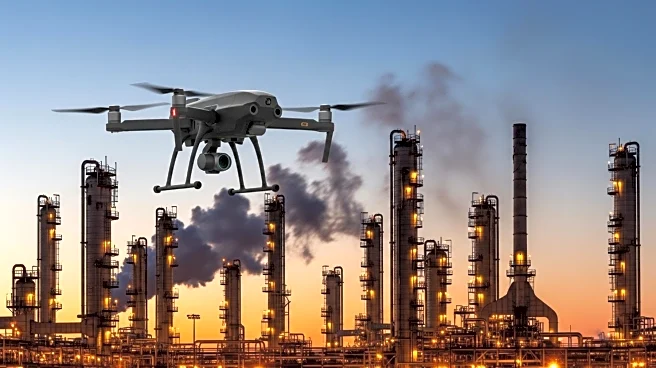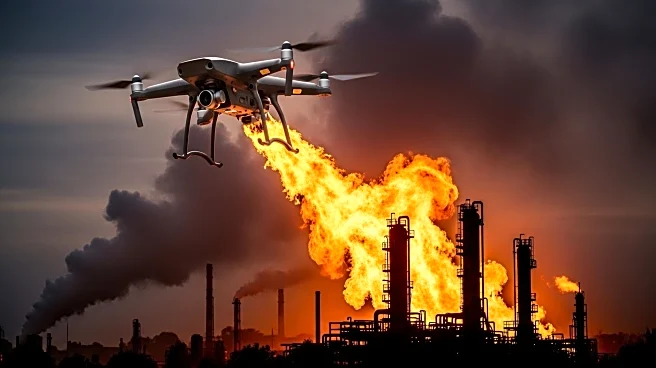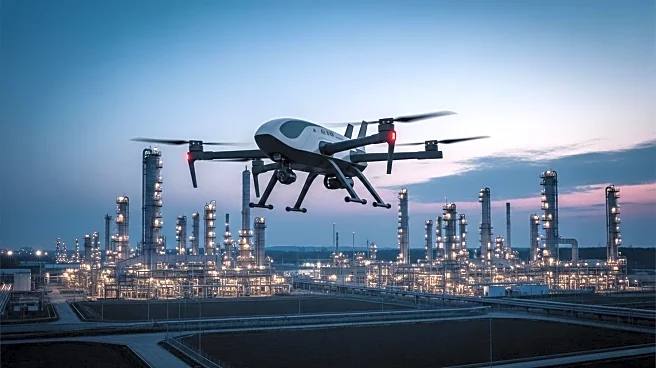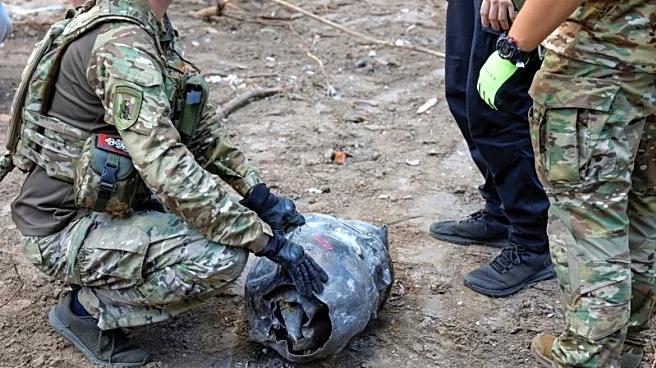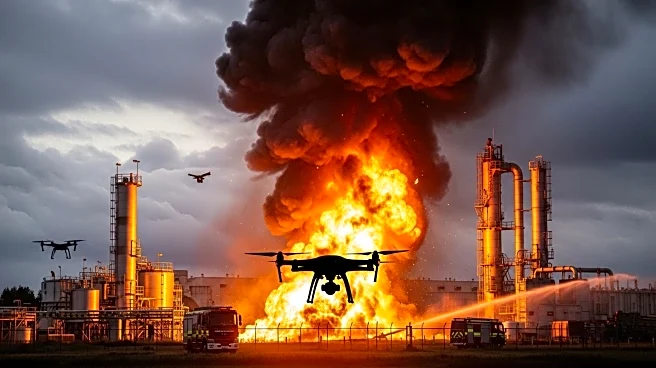What's Happening?
Ukraine's 34th Coastal Defense Brigade has been actively employing drone warfare to counter Russian military operations in Kherson. The brigade, established less than a year ago, has become one of the most lethal units in modern warfare, utilizing suicide drones to target Russian forces. These drones, equipped with FPV cameras and warheads, are manufactured locally at a low cost and are pivotal in Ukraine's defensive strategy. The brigade's operations include targeting Russian bombers and surveillance aircraft, significantly impacting Russia's strategic air fleet. The use of drones has transformed the battlefield, allowing Ukrainian forces to engage Russian targets with precision and efficiency.
Why It's Important?
The use of drone warfare by Ukraine represents a significant shift in military tactics, highlighting the increasing role of technology in modern conflicts. This approach allows for targeted strikes, reducing the risk to Ukrainian soldiers while maximizing damage to Russian forces. The gamification of warfare, where drone pilots earn points for successful missions, underscores the evolving nature of military engagement. This strategy not only disrupts traditional combat methods but also challenges Russia's military capabilities, potentially altering the balance of power in the region. The success of Ukraine's drone units could influence future military strategies globally.
What's Next?
As Ukraine continues to refine its drone warfare tactics, it is likely to increase production and deployment of these drones, further enhancing its defensive capabilities. The ongoing conflict may see an escalation in drone usage, prompting Russia to develop countermeasures. International observers and military analysts will be closely monitoring these developments, as they could set precedents for future conflicts. The effectiveness of Ukraine's drone strategy may also lead to increased support from allies, providing additional resources and technology to bolster its efforts.
Beyond the Headlines
The ethical implications of drone warfare, particularly the gamification of killing, raise questions about the future of military engagement. This method of warfare, while efficient, may desensitize soldiers to the human cost of conflict. Additionally, the widespread use of drones could lead to increased civilian casualties, as precision strikes may not always differentiate between combatants and non-combatants. The long-term impact on military culture and the psychological effects on drone operators are areas that require further exploration.

